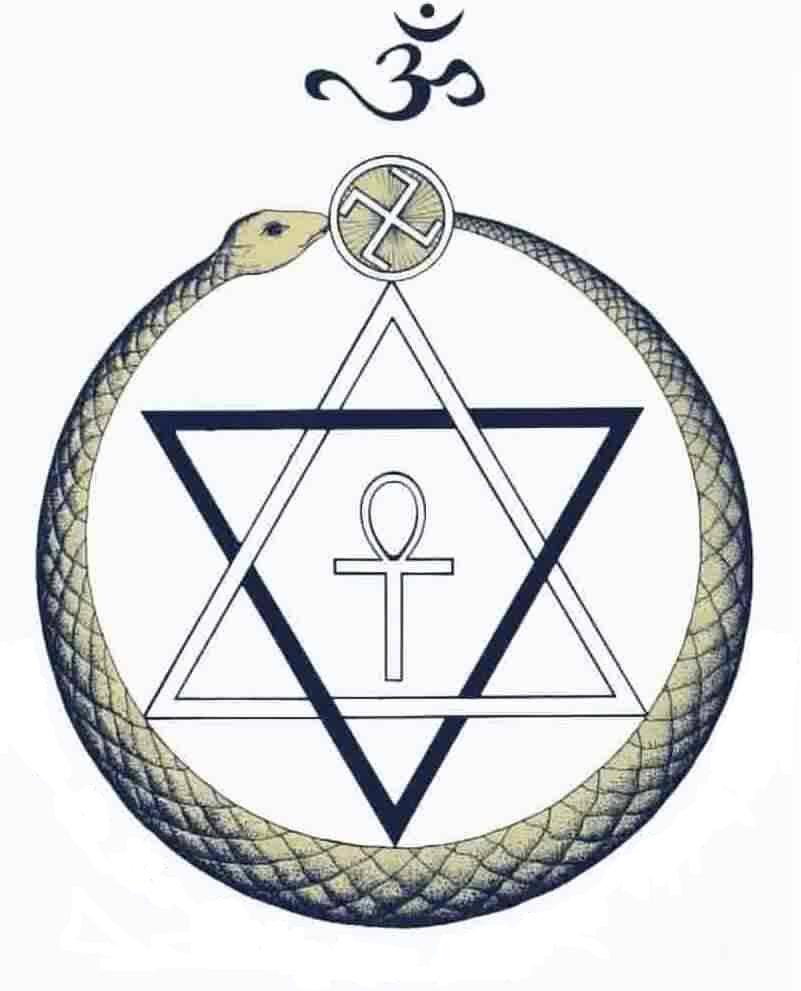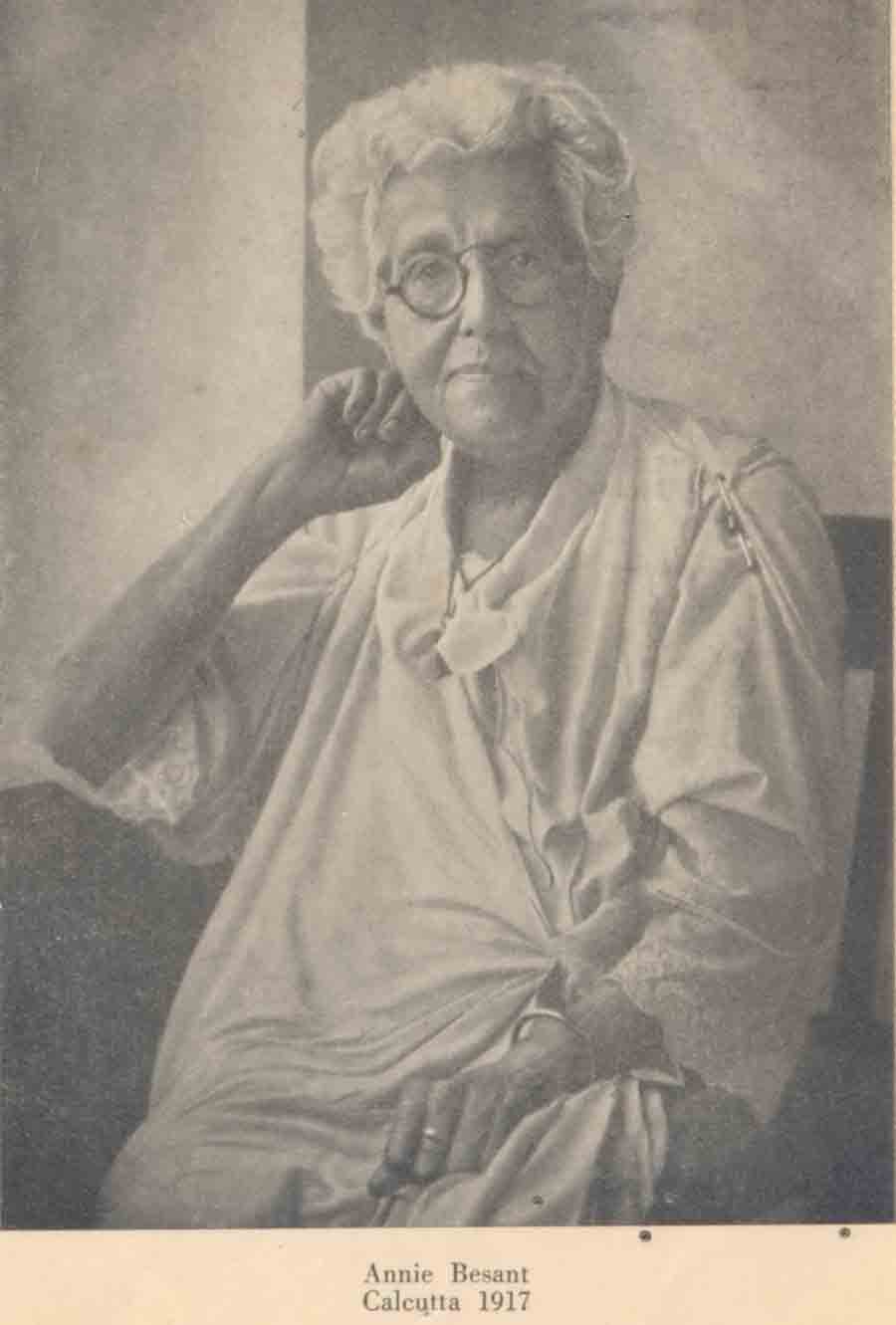
Brothers: -
We shall find ourselves this morning in a very different atmosphere from that in which we were yesterday, and in which we shall be tomorrow. We shall not now have around us the atmosphere of romance, of chivalry, that we find both in the faith of Islam and in that of the Sikhs. On the contrary we shall be in a calm, philosophic, quiet atmosphere. We shall find ourselves considering the problems of human existence looked at with the eye of the philosopher, of the metaphysician, and on the other hand the question of conduct will take up a large part of our thought; how man should live: what is his relation to the lower creatures around him; how he should so guide his life, his actions, that he may not injure, that he may not destroy. One might almost sum up the atmosphere of Jainism in one phrase, that we find in the Sutra Kritānga, [iii, 20] that man by injuring no living creature reaches the Nirvana which is peace. That is a phrase that seems to carry with it the whole thought of the Jaina: peace - peace between man and man, peace between man and animal, peace everywhere and in all things, a perfect brotherhood of all that lives. Such is the ideal of the Jaina, such is the thought that he endeavors to realize upon earth.
Now the Jainas are comparatively a small body; they only number between one and two million men; a community powerful not by its numbers, but by its purity of life, and also by the wealth of its members - merchants and traders for the most part. The four castes of the Hindus are recognized by the Jainas, but you will how find few Brahmanas among them; few also of the Kshatriyas, which caste seems wholly incompatible with the present ideas of the Jainas, though, their Jinas are all Kshatriyas. The vast mass of them are Vaishyas - traders, merchants and manufacturers - and we find them mostly gathered in Rajputana, in Gujarat, in Kathiawar; scattered indeed also in other parts, but the great Jaina communities may be said to be confined to these regions of India. Truly it was not so in the past, for we shall find presently that they spread, especially at the time of the Christian Era, as well as before it and after it, through the whole of Southern India; but if we take them as they are today, the provinces that I mentioned may be said practically to include the mass of the Jainas.
Photo by Bangla Library
There is one point with regard to the castes which separates them from Hinduism. The Sannyāsi of the Jaina may come from any caste. He is not restricted, as in ordinary orthodox Hinduism, to the Brahmana caste. The Yati may come from any of the castes, and of course as a rule comes from the Vaishya, that being the enormously predominating caste among the Jainas.
And now with regard to their way of looking at the world for a moment; and then we will consider the great. Being, who is spoken of in western orientalism, not by themselves, as the Founder.
They have the same enormous cycles of time that we are familiar with in Hinduism; and it must be remembered that both the Jaina and the Buddhist are fundamentally offshoots from ancient Hinduism; and it would have been better had men not been so inclined to divide, and to lay stress on differences rather than similarities - if both these great offshoots had remained as Darsanas of Hinduism, rather than have separated off into different, and as it were rival, faiths. For a long time among the occidental scholars, Jainism was looked on as derived from Buddhism. That is now admitted to be a blunder and both alike derive from the more ancient Hindu faith; and in truth there are great differences between the Jaina and the Buddhist, although there be also similarities, likenesses of teaching. There is however no doubt at all, if you will permit me to speak positively, that Jainism in India is far older than Buddhism. The last of its great Prophets was contemporary with Sākya Muni, the Lord Buddha; but He was the last of a great succession, and simply gave to Jainism its latest form. I said there were great cycles of time believed in by the Jaina as by the Hindu; and we find that in each vast cycle - which resembles the day and night of Brahmā - twenty-four great Prophets come to the world, somewhat, though not entirely, of the nature of Avatāras. They always climb up from manhood, while, in some cases, the Hindu is loath to admit that an Avatāra is a perfected man. The Jaina has no doubt at all on this point. His twenty-four great Teachers, the Tirthamkaras, as they are called, these are perfected men. To them he gives the many names, that you will find applied in Buddhism in somewhat different senses He speaks of them as Arhats, as Buddhas, as Tathāgatas, and so on, but above all as, Jinas; the Jina is the conqueror, the man made perfect, who has conquered his lower nature, who has reached divinity, in whom the Jva asserts his supreme and perfected powers: he is the Isvara, from the Jaina point of view.
Twenty-four of these appear in each great cycle, and, if you take the Kalpa Sutra of the Jainas, you will find in that the lives of these Jinas. The life of the only one which is given there at all fully - and the fullness is of a very limited description - is that of the twenty-fourth and last, He who was called Mahāvīra, the mighty Hero. He stands to the Jaina as the last representative of the Teachers of the world; as I said, He is contemporary with Sākhya Muni, and by some He is said to be His kinsman. His life was simple, with little incident apparently, but great teachings. Coming down from loftier regions to His latest incarnation, that in which He was to obtain illumination, He at first guided His course into a Brahmana family, where, it would seem from the account given, He had intended to take birth; but Indra, the King of the Devas, seeing the coming of the Jina, said that it was not right that He should be born among the Brahmanas, for ever the Jina was a Kshatriya and in a royal house must He be born. So Indra sent one of the Devas to guide the birth of the Jina to the family of King Siddhārtha, in which He was finally born. His birth was surrounded by those signs of joy and delight that ever herald the coming of one of the great Prophets of the race - the songs of the Devas, the music of Gandharvas, the scattering of flowers from heaven - these are ever the accompaniments of the birth of the one of Saviors of the world. And the Child is born amid these rejoicings, and since, after His conception in the family, the family had increased in wealth, in power, in prosperity, they named Him Vardhamāna - the Increaser of the prosperity of his family. He grew up as a boy, as a youth, loving and dutiful to His parents; but ever in His heart the vow that He had taken, long lives before, to renounce all, to reach illumination, to become a Savior of the world. He waits until father and mother are dead, so that He may not grieve their hearts by the leaving; and then, taking the permission of His elder brother and the royal councillors, He goes forth surrounded by crowds of people to adopt the ascetic life. He reaches the jungle; He pulls off his robes, the royal robes and royal ornaments; He tears out his hair; He puts on the garment of the ascetic; He sends away the royal procession that followed Him, and plunges alone into the jungle. There for twelve years He practices great austerities, striving to realize Himself and to realize the nothingness of all things but the Self; and in the thirteenth year illumination breaks upon Him, and the light of the Self shines forth upon Him, and the knowledge of the Supreme becomes His own. He shakes off the bonds of Avidyā and becomes the omniscient, the all-knowing; and then He comes forth as Teacher to the world, teaching for forty-two years of perfect life.
Of the teachings, we are here told practically nothing; the names of some disciples are given; but the life, the incidents, these are all omitted. It is as though the feeling that all this is illusion, it is nothing, it is naught, had passed into the records of the Teacher, so as to make the outer teaching as nothing, the Teacher Himself as nothing. And then He dies after forty-two years of labor, at Pāpā 526 years before the birth of Christ. Not very much, you see, to say about the Lord Mahāvīra; but His life and work are shown in the philosophy that He left, in that which He gave to the world, though the personality is practically ignored.
Before him, 1,200 years, we are told, was the twenty-third of the Tirthamkaras, and then, 84,000 years before Him, the twenty-second and so on backwards and backwards in the long scroll of time, until at last we come to the first of These, Rishabhadeva, the father of King Bharata, who gave to India its name. There the two faiths, Jainism and Hinduism, join, and the Hindu and the Jaina together revere the Great One who, giving birth to a line of Kings, became the Rishi and the teacher.
 Annie Besant
Annie Besant
